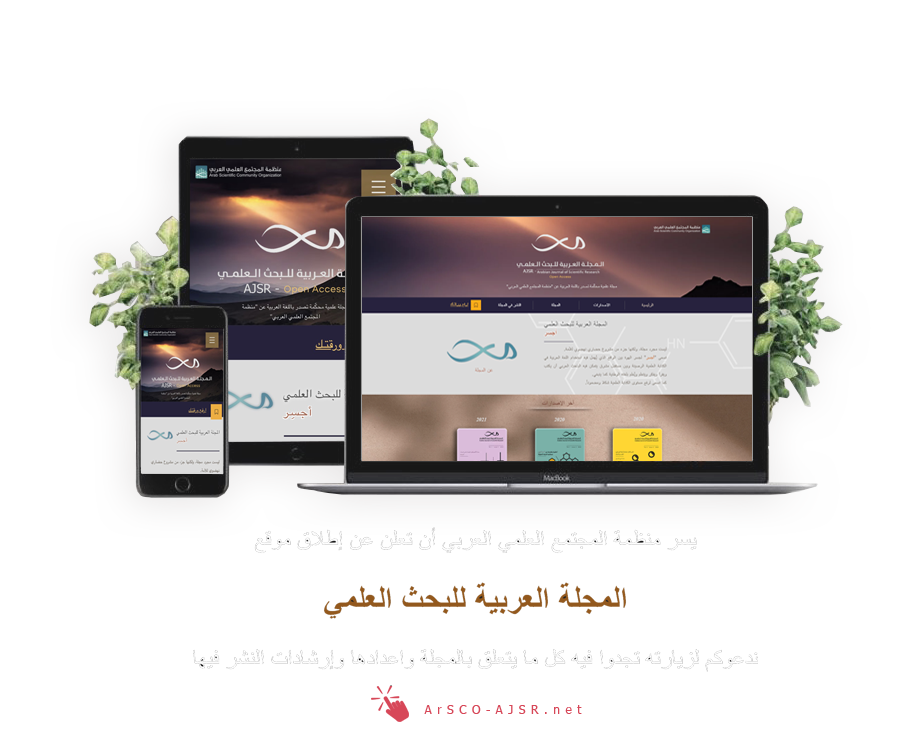للبحث الدقيق يمكنك استخدام البحث المتقدم أدناه
يعتمد البحث السريع على الكلمات الموجودة داخل عنوان المادة فقط، أما البحث المتقدم فيكون في كافة الحقول المذكورة أعلاه
نتائج البحث
دراسة حول أبحاث الفيروسات التاجية على مدى 120 عاما
-
 منصة النقاش
منصة النقاش
كُن الأول ... لفتح نقاش حول موضوع هذا المقال
-
الوقت
01:57 م
-
تاريخ النشر
29 يوليو 2021
الكلمات المفتاحية :

A study published in March 2021 , mapping scientific research on diverse coronaviruses across 120 years, by a Saudi-Pakistani research team, recommends that it is time for an ongoing, collaborative, and global research approach to these and other viruses.
Infectious diseases are a complex, recurrent and challenging public health risk, and infectious diseases accompanied by increased disease prevalence and mortality remain major and recurrent risks to public health. Various coronaviruses are causing significant impacts on health, mobility, and economic and social conditions, as is the case with the current pandemic.
The important role of scientific research in disease control and prevention, especially with regard to epidemics of viral diseases and other infectious epidemics, is well known and well established . Research outputs and trends lay a solid foundation for virus identification, vaccine development, prevention and control measures, and development of specific drugs.
Bibliometrics is a gateway to identifying research trends and comprehensive evaluation of procedures and performance indicators that are widely used for knowledge mapping in various scientific disciplines. Identifies authors, institutions, countries, and other salient indicators involved in research, and examines the development of key knowledge areas in the relevant literature.
I've been published a lot of diverse research literature about the various viruses over a long period of time, it is useful to collect and conduct a comprehensive scientific on the assessment of the performance of those research related to viruses coronary over time, including Kovid- virus 19 , this was the study that monitored the published research mode These viruses have been spread over a period of one hundred and twenty years of researchers' efforts ( 1900 - 2020 ). The increase in frequent encounters with current and emerging infectious diseases requires a pause for study.
In this study, researchers extracted data related to coronavirus research from the Web of Science (WoS) , included and retrieved all types of publications and then measured their quantity and quality.
Overall, an increasing trend is observed over time led by the United States and China followed by the United Kingdom, Europe and a few other developed countries. The past two decades contributed about 39.5 % of the documents, while only 6 months of the year 2020 contributed about 46.5 % of the total documents.
The study showed that most of the published literature is from research articles (Articles) , and that the Journal of Virology and the British Medical Journal were the main sources for these papers. It also highlighted the most published researchers and the most cited, as well as the contributions of countries and networks of researchers that showed a lack of participation by countries with limited resources, although these countries suffer from epidemics, perhaps more. As expected, a significant increase in the number of publications was observed after the recent pandemic, which is the highest, unprecedented and rapidly growing.
Viruses are among the many pathogens of infection, and they have evolved with hostile traits such as difficulty to identify, diverse modes of transmission, and potential to cause epidemics. This phenomenon has become more evident in the past two decades worldwide with threats such as; Zika, dengue, Ebola, influenza, Middle East respiratory syndrome (MERS) and severe acute respiratory syndrome (SARS) , along with increased antimicrobial resistance (AMR) , increased travel and other global relationships have added another challenge in the transformation of these diseases into epidemics and pandemics.
Coronaviruses (CoVs) are the largest known RNA viruses , and until recently, there were six known human coronaviruses . The novel coronavirus (SARS-CoV-2/COVID-19) was identified as seventh in the series in late December 2019, and the World Health Organization ( WHO ) declared it a "public health emergency of international importance" on January 30, 2020. Viruses are considered Corona is known threats, but the latest Corona virus has caused extraordinary multidimensional consequences for health, mobility and socio-economic conditions, which has further complicated the situation, and planning, systems and resources have faced severe challenges around the world .
This study reported that the trend of increased productivity in general over the years, beginning in the 1900s with the beginning of an initial upward trend in the late 1960s that may have followed the initial phase of the response to the human coronavirus . The first several decades were relatively less productive with over 85 % of documents published in the last two decades (2000-2020) with three sudden spikes showing increased research productivity. The number of documents began to increase abruptly from 2003 to 2006 followed by a decrease until a second rise from 2013 to 2016 which also followed a decrease in numbers until 2019. This result was also observed in other related studies that found mutations; After SARS and the time of MERS (2012-2014) in the last two decades, along with the recent rise after COVID-19 , which is relatively higher than previous highs reflecting its general impact on researchers worldwide, the first six months of 2020 have already been reported to have contributed about 46.5 % of total publications and this trend is still likely to expand rapidly .
This study provides a comprehensive reference and summary overview of the coronavirus, and the evolution and performance of relevant scientific research over time . In general, an increasing trend in terms of number of publications has been observed over the years, led by USA, China, UK, Europe and a few other developed countries and the majority has been published in the last two decades . About 6 months of 2020 have already contributed over 46 % of all documents and this trend is still expanding . Notably, shorter retrograde elevations of increased leaflets were detected after the epidemic followed by declines in productivity in the past two decades, indicative of discontinuity . The recent rise after the Corona virus is the highest and unprecedented . In general, similar trends were observed for senior authors in terms of productivity, impact, citation count, international collaboration, organizational affiliations, and funding sources with few exceptions . The top 20 countries contributed about 89% of the documents, which indicates a lack of joint global efforts. Networks between researchers have been observed mainly among developed countries, and may require more cooperation with low and middle income countries.
The authors strongly recommend that the modern COVID-19 pandemic be considered as a call for ongoing, more collaborative and collaborative global research .
Source
- A scientometric analysis on coronaviruses research (1900–2020): Time for a continuous, cooperative and global approach . Ahmad AzamMalik ; Nadeem ShafiqueButt; Mohammad AbidBashir; Syed AmirGilani
> Journal of Infection and Public Health, Volume 14, Issue 3 , March 2021, Pages 311-319

هذا والموقع يساعد المؤلف على نشر إنتاجه بلا مقابل من منفعة معنوية أو مادية، شريطة أن يكون العمل متوفراً للنسخ أو النقل أو الاقتباس للجمهور بشكل مجاني. ثم إن التكاليف التي يتكبدها الموقع والعاملون عليه تأتي من مساعدات ومعونات يقبلها الموقع ما لم تكن مرتبطة بأي شرط مقابل تلك المعونات.
ترخيص عام
الموقع قائم على مبدأ الترخيص العام للجمهور في حرية النسخ والنقل والاقتباس من جميع المحتويات والنشرات والكتب والمقالات، دون مقابل وبشكل مجاني أبدي، شريطة أن يكون العمل المستفيد من النسخ أو النقل أو الاقتباس متاحا بترخيص مجاني وبذات شروط هذا الموقع، وأن تتم الاشارة إلى منشورنا وفق الأصول العلمية، ذكرا للكاتب والعنوان والموقع والتاريخ.
مواضيع ذات علاقة
أضف تعليقك
التصويت

-
الكيمياء التحليلية Analytical Chemistry
-
الكيمياء الطبية Medicinal Chemistry
-
الكيمياء العضوية Organic Chemistry
-
الكيمياء الفيزيائية Physical Chemistry
















0 التعليقات